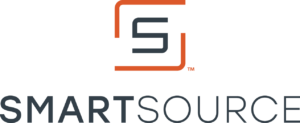
Article sponsored by SmartSource
By Jeremy Lyon, Director of Sales for SmartSource
In today’s digital world, businesses of all sizes must be proactive about cybersecurity. This is especially true for staffing agencies that work with a virtual talent pool, thus expanding the “attack surface” for would-be cybercriminals.
Whether protecting customer data, preventing online fraud, or guarding against malware, a secure IT infrastructure is essential to avoid being crippled by cyberattacks. In fact, in its Global Risks Report 2023, The World Economic Forum lists cybercrime and cyber insecurity as the eighth-most clear and present danger the world will face over the next decade.
Fortunately, staffing businesses don’t have to go it alone to increase security measures. Outsourcing IT services can help agencies increase cybersecurity and reduce the risk of a breach or cyberattack.
By taking advantage of the resources, experience, and skill of an experienced IT provider, businesses can create a custom security plan tailored to its unique needs to ensure its data remains secure. Outsourcing IT services can also provide the peace of mind that comes with knowing your data is monitored and protected by a team of experts. With the right IT partner, staffing companies can trust that their data is secure and that their customer’s data is safe.
The importance of data security
From customer leads to sales figures to account information, businesses of all types are collecting and storing more critical data than ever before. Unfortunately, the more data companies collect, the more attractive they become to cyber criminals. More than 66% of SMBs reported a cyberattack over a 12-month period.
For staffing firms, many have gone through numerous market changes and fluctuations in recent years, making them not as focused on—or unaware of—the potential cyber risks of today’s dispersed workforce.
Busy talent using the same username/password combinations across multiple accounts can become victims of credential stuffing, a form of cyberattack whereby hackers use previously stolen username and password combinations to gain access to other accounts. In addition, although most major video conferencing platforms have taken measures to prevent intrusions, hackers may still be able to obtain confidential or sensitive information from participants.
Such breaches can also garner heavy costs. According to recent studies by IBM, a single data breach in 2022 cost companies an average of $4.35 million, the highest average total cost in the 18-year history of its annual report. That same study showed remote work due to COVID-19 increased the average cost by another $1 million.
Unfortunately, many companies are ill-equipped to defend against sophisticated threats that target their data. Hackers know this and are quick to exploit it, taking advantage of businesses’ over-reliance on outdated security measures. And these types of threats are only expected to rise in the coming years.
While no business is immune, many can reduce risk by implementing robust security strategies. Outsourcing IT services can help companies reduce their data security risk by providing a customized security plan and the resources and expertise to implement it.
Common IT security challenges
The sheer amount of data collected and stored by businesses has created a vastly complex digital landscape. As companies have become more reliant on technology, they’ve also become more vulnerable to cyber threats. Staffing firms of all sizes face unique challenges when it comes to data security, but there are a few common challenges that almost all organizations face:
- Organizational challenges — Some of the most common organizational challenges that stand in the way of effective security practices include siloed security teams, a lack of employee education, a lack of visibility into data flows, and insufficient support from the top.
- Lack of resources — While many companies recognize the need for robust security practices, they simply don’t have the resources or skills in place to implement them.
- Lack of visibility into data and data flows — To protect data effectively, businesses must have visibility into what data they collect and where it’s stored.
- Data security is not a priority — While companies may recognize the dangers and challenges posed by cyber threats, they often fail to prioritize data security.
Steps to ensure your data is secure
Regardless of the size of your staffing business, you’ll first need to create a secure IT infrastructure to ensure you have the tools in place to minimize security risks. While each company’s security strategy will vary, there are several practices staffing firms should implement to create a secure IT infrastructure:
- Define your IT security goals and determine what practices are necessary to achieve them.
- Create a security plan to outline the practices you’ll use to protect your data and create a plan of action.
- Implement the necessary practices to ensure employees are actively engaged in security practices and follow the plan.
Once an IT infrastructure is in place, staffing firms can implement security practices to protect their data from common threats. While each business’ security strategy will vary, there are several practices companies can implement across their entire organization to protect their data:
- Data discovery identifies the data you collect and where it’s stored, helping you to be better positioned to protect that information.
- Data classification allows organizations to determine what security practices or tools are necessary to protect against common threats.
- Data governance helps companies ensure their data is collected, stored, and transmitted appropriately.
Why outsourcing IT services makes sense
While businesses can develop and implement security practices internally, outsourcing this process to an experienced IT provider is often more effective. Outsourcing IT services can help companies develop and implement a security plan tailored to their unique needs.
What’s more, outsourcing IT services provides businesses with access to the necessary expertise and resources to implement strong security practices. With the assistance of an experienced IT provider, organizations can implement comprehensive security practices that protect their data from common data security threats.
Data security solutions offered by IT providers
IT providers offer various solutions that can help Staffing firms protect their data, including a combination of security practices, technologies, and solutions designed to protect companies against common threats.
- Identity and access management – Allows companies to identify who has access to the network and the data. From there, organizations can manage user access and control who has it and what they can do once they’re inside the network. This helps to prevent malicious actors from accessing data and allows IT teams to monitor data access.
- Endpoint detection and response (EDR) – Focuses on protecting endpoint devices (such as laptops, desktops, and mobile devices) within a network in real-time. EDR solutions provide organizations with visibility into endpoint activity and the ability to detect and respond to security incidents promptly and effectively. This can include the ability to detect and prevent malware infections, unauthorized access to sensitive data, and other security incidents. In addition, the top EDR solutions feature machine-learning capabilities that provide threat analysis and reporting functions to help organizations understand the nature of any threat and take appropriate action to remediate it.
- Data backups – Ensures a modern backup strategy is developed, maintained, and based on industry best practices. This includes local and cloud-based backups with disaster recovery capabilities that allow for the quick recovery of IT environments should an incident occur that results in data loss.
- Security awareness/phishing training – Helps end users identify and avoid phishing attempts by threat actors and other cybersecurity threats that may target their data. Users are the last line of defense of security because, ultimately, their actions could allow network and data-resource access to threat actors. By investing in these training programs, individuals and organizations can reduce the risk of data breaches to protect themselves from the consequences of a breach.
- Security information and event management (SIEM) – SIEM is a type of software that provides logs and analysis on various network devices, including user activity, network traffic, and other system logs. A SIEM can use this data and analytics to identify potential security incidents like suspicious network activity, network access attempts, and other infections. This tool can also respond to such incidents by blocking unauthorized access attempts, disabling accounts, or containing incidents that prevent the possible spreading of an infection.
- Vulnerability scanning and patch management – Vulnerability scanning can assist in identifying potential security weaknesses in various systems and applications. Patch management allows operating systems to have vulnerabilities repaired.
To this end, companies like SmartSource can offer a full suite of managed IT services, including next-gen EDR solutions backed by a 24×7 Security Operations Center. Let us help you monitor and eliminate threats before they harm your systems.
About the Author
Jeremy Lyon is Director of Sales for SmartSource, a leading technology solutions provider for companies needing various solutions, from computer and AV rentals to fully managed IT solutions. For over 35 years, SmartSource has stayed ahead of constantly evolving AV and IT technology, leveraging its expertise to help companies excel. Contact us today to learn more.






